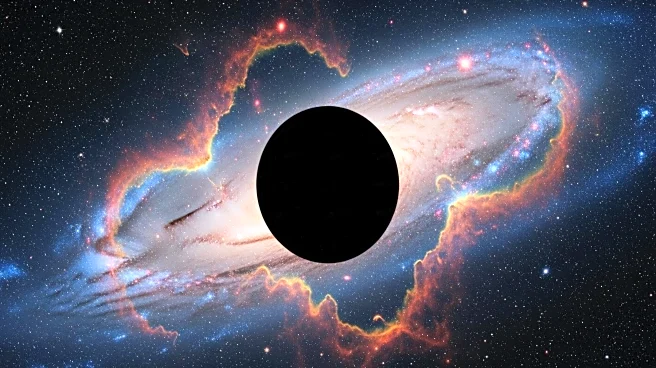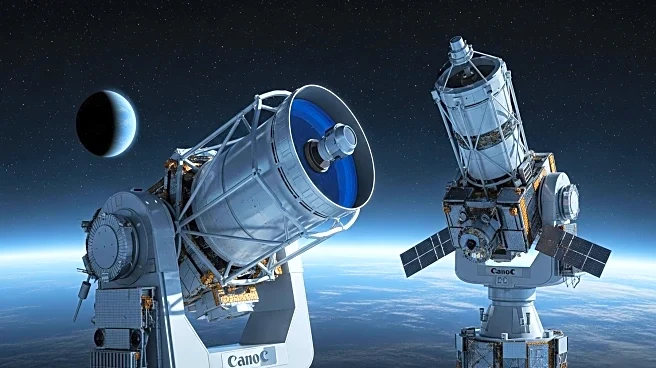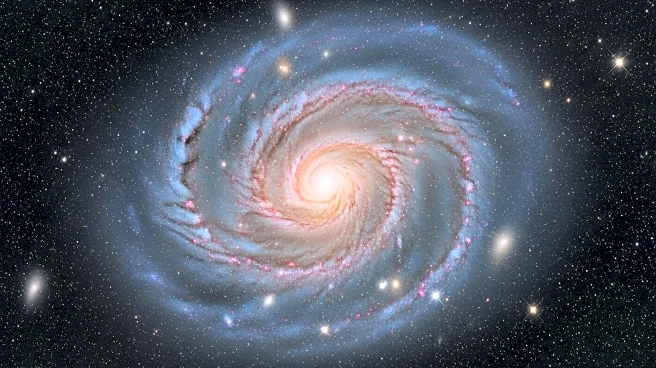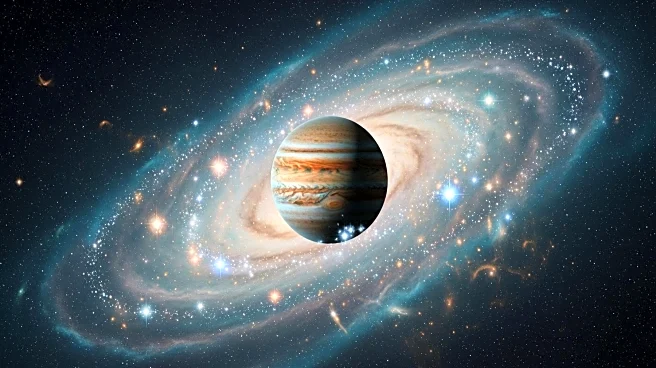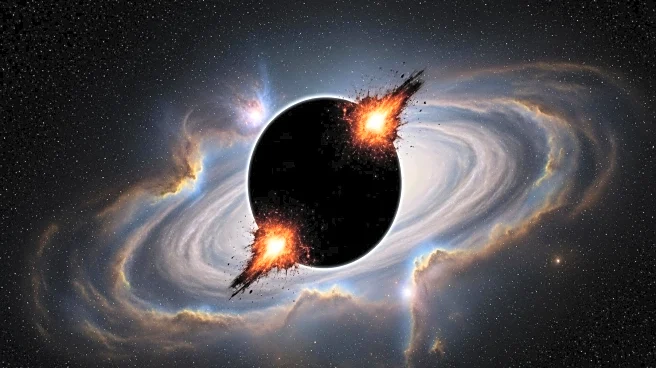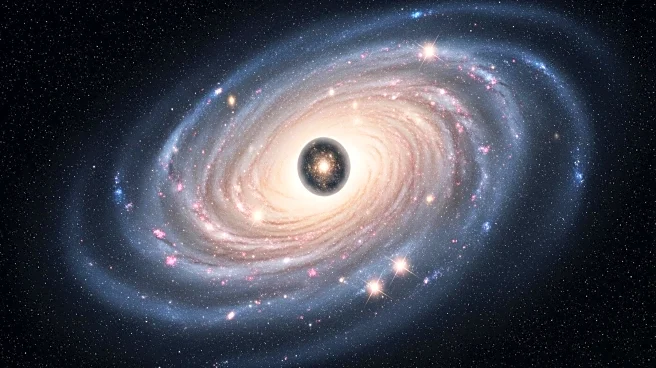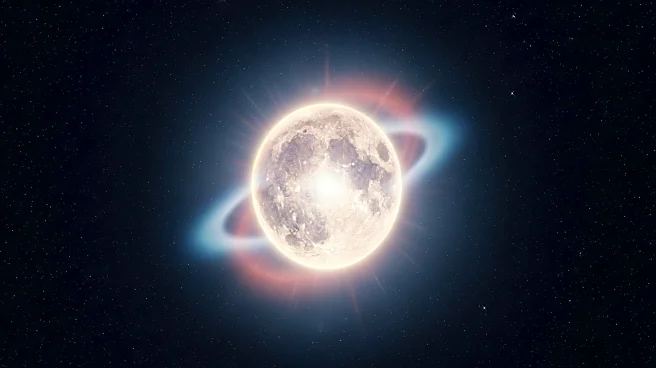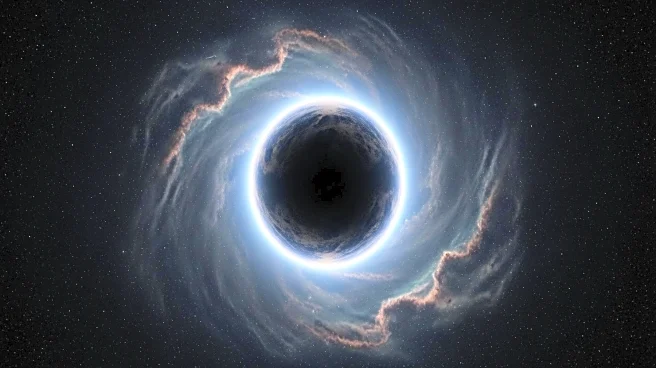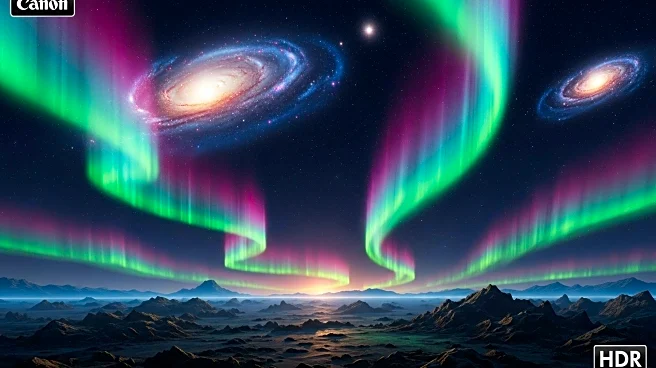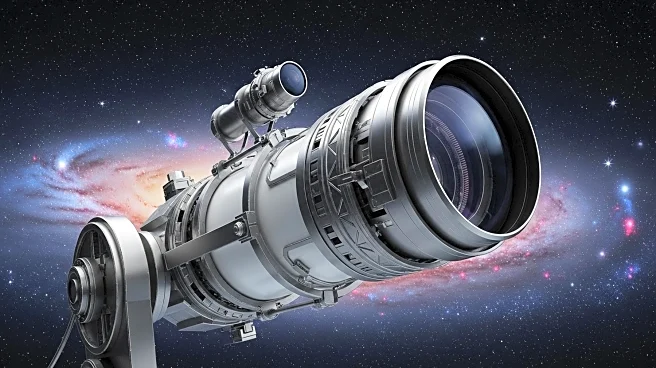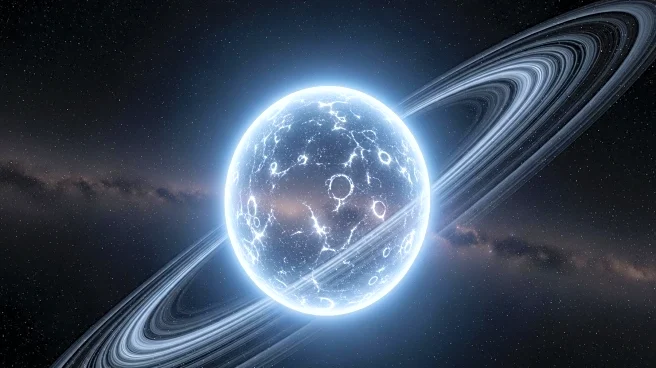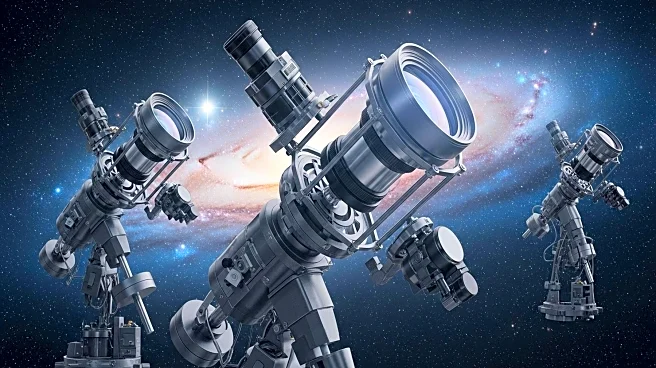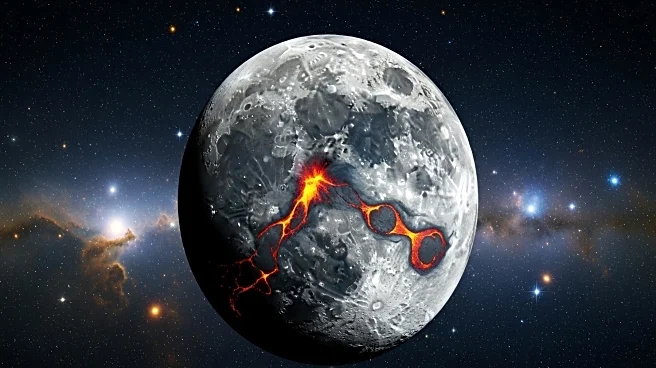What is the story about?
What's Happening?
Astronomers have observed a rogue planet, Cha 1107-7626, consuming an unprecedented 6 billion tons of gas and dust per second. This discovery was made using the European Southern Observatory's Very Large Telescope. The planet, located in the Chamaeleon constellation about 620 light-years from Earth, is not bound to any star and is freely floating through space. The planet's mass is estimated to be between five and ten times that of Jupiter. The rapid accretion of material onto the planet blurs the line between planets and stars, suggesting that some planetary-mass objects may form similarly to stars.
Why It's Important?
The discovery of Cha 1107-7626 challenges existing notions about planet formation and the distinction between stars and planets. This rogue planet's behavior suggests that planetary-mass objects can undergo growth processes similar to those of stars, which could have implications for our understanding of planetary formation and the evolution of celestial bodies. The findings may lead to a reevaluation of how planets and stars are classified and understood, potentially impacting future astronomical research and theories.
What's Next?
Further observations and studies are needed to understand the mechanisms driving the rapid accretion observed in Cha 1107-7626. Researchers may focus on the planet's magnetic activity and the changes in its surrounding disk's chemistry during accretion. These studies could provide insights into the processes that govern the formation and growth of rogue planets and their potential to host complex chemistry similar to that found in stars.
AI Generated Content
Do you find this article useful?
